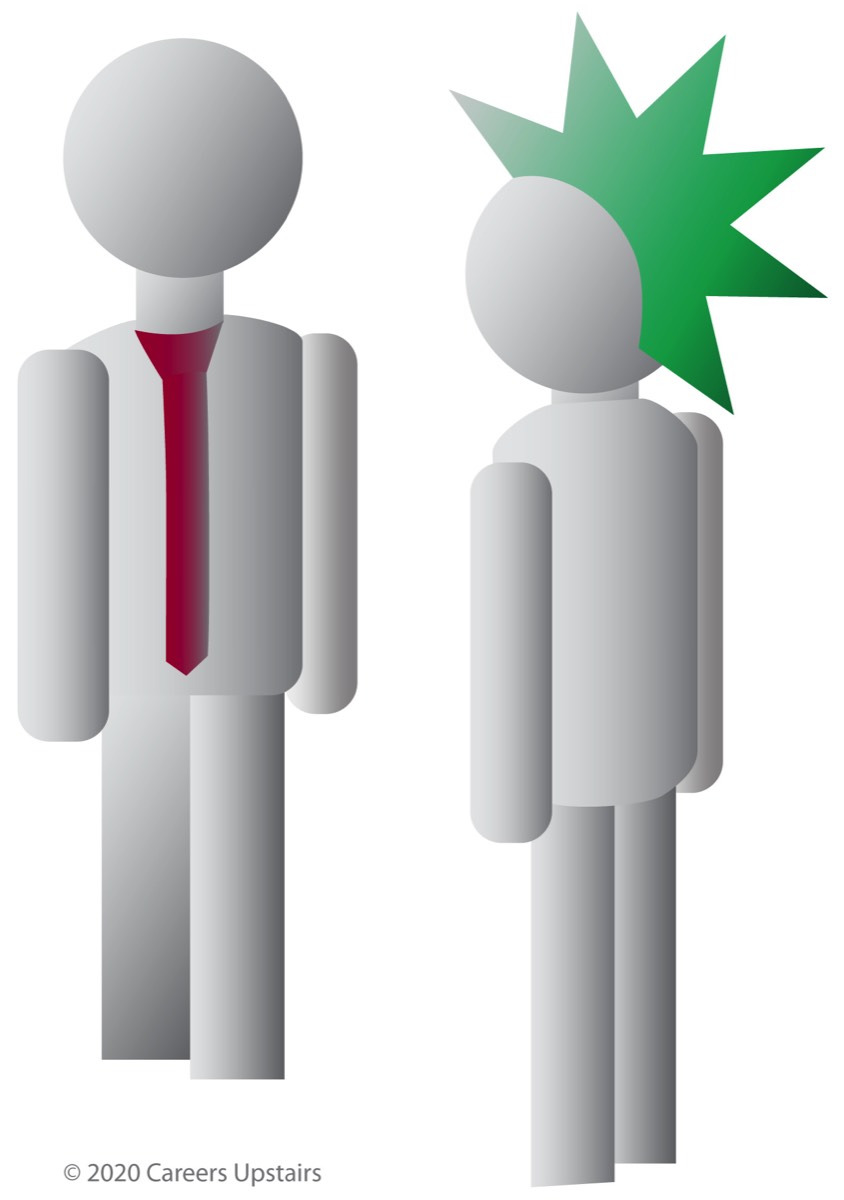
Brand vs. Fit
Let's say that you've developed your personal brand and that your resume communicates a strong brand image. You've probably heard that you will improve your chances of being hired if you're a good fit.
That's nice, but what is fit?
People often confuse brand with fit. Your brand is the vehicle that carries the message of your value to the employer—what special expertise you have, what's unique about you. It's the one thing by which you are recognized.
For example, suppose you are known as your company's go-to person for crunching numbers. Thus, your personal brand is all about financial analysis. Talking about you at the water-cooler, your colleagues might say you're the company's “financial geek.” If you're a graphic designer with formidable chops in motion graphics, then expertise in motion graphics forms the heart of your brand.
Those are examples showing how your personal brand carries the message of value to your current boss—and to prospective employers.
Fit is an entirely different concept. Fit is the degree to which your values are compatible with the company’s corporate culture and values. Your choice of clothing, body language, jargon, and attitude all reflect your values, the same way attire, jargon, and attitudes reflect the culture and values of a company.
Employers invite you to interview because they hope that your promise of value (as implied by your brand) will meet their needs. Once they meet you in person, it’s your job to convince them of just two things:
- You can meet their needs.
- You are a good fit.
Candidates who lack certain skills can be trained on the job, but the truth is that no amount of training can overcome a poor fit! Astute employers will hire you if they are confident that your temperament is well-matched with the company, even if you lack certain skills they need. They know that hiring a highly skilled employee with a poor fit to the corporate culture will result in more turnover when that employee inevitably leaves.
The interview is the time to both communicate your personal brand and your values to convince the employer that you will not become one of their employee-turnover statistics.
Establish goals for the interview:
* Be yourself: Of course, you want the job, but more importantly: you must be true to yourself. If you are sincere about expressing who you are, you will be more relaxed during the interview. Discovery during the interview that you would not be a good fit could save you from probable job dissatisfaction and unemployment sooner than later.
* Communicate your brand: The interviewer wants to see how your skills and attributes have led to your achievements. In responses no longer than two minutes, tell Challenge-Action-Result (CAR) stories using soft-skills laden language to show who you are and what you can do.
* Determine your comfort level with the company’s culture: Know whether the culture is compatible to you.
* Mimic the corporate culture: If you know in your heart of hearts that you would be a good fit, show it! Your attire, body language, jargon, and attitude demonstrate who you are. These variables invite comparisons of your fit within the organization’s corporate culture.
You don't have to do it alone; we can help you learn interview strategies and resources; see our ebook, Interview Checklists That Get You Hired, and Interview Coaching. We're here for you if you need assistance.